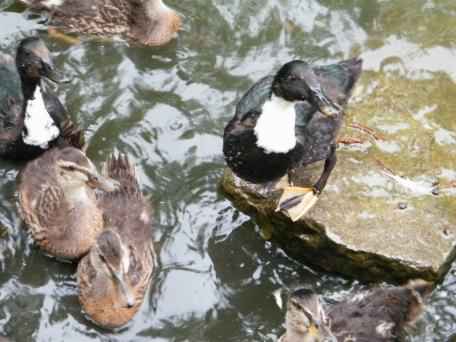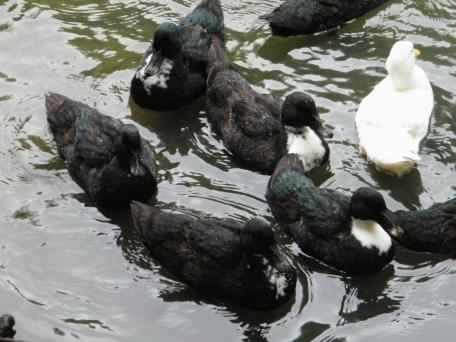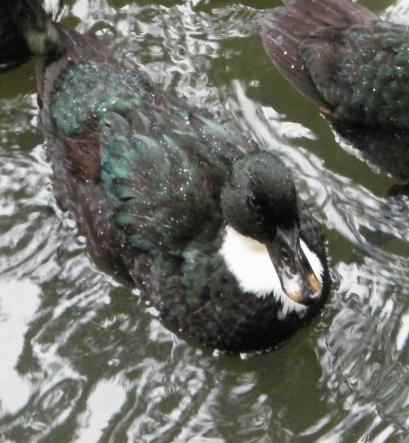


Click any photo for a larger image
Swedish Black duck - Anas platyrhynchos domesticus
Family - Anatidae
Another of the many domesticated forms of the Mallard duck, the Swedish Black duck is thought to have originated from Sweden (Swedish Pomerania, what is now modern Germany and Poland) in the middle 1800s. Similar in size to a Mallard they are an overall black with a green iridescent sheen, white neck and bib and a black beak. Males at 3–4Kg (6.6–8.8lb) are slightly larger and heavier than females at 2.5–3.5Kg (5.5–7.7lb). The white neck and bib can be very variable, both in size and "whiteness" with some being heavily marked with black splots. They are a hardy, strong duck with good foraging ability.
There is another form of "Swedish" duck, the Swedish Blue and currently there is some discussion as to the correct lineage of the Swedish Black and the Swedish Blue ducks. Swedish Blues are heterozygous for colour where two Swedish Blue ducks will produce 25% black, 50% blue (slate grey–bluish plumage) and 25% silver coloured offspring. Swedish Black ducks are homozygous or "true" in that they always produce black offspring. Both forms are listed as endangered in Sweden and America.
Like the Mallard, the Swedish Black is an omnivorous feeder with a mixed diet of larvae, pupae, aquatic animals, plant material and seeds, however they are often fed large amounts of bread by the public and can become very tame. This is a popular misconception that ducks should be fed bread, but it has limited nutritional value for them and it can lead to the death of small ducklings. Any bread left behind in the water can lead to the water becoming polluted, causing algal blooms, allowing bacteria to breed and attracting rats. Ducks do not have "teeth", they have serrations (saw–like edges) on their bills that allow them to filter food out of the water.
Article - why you shouldn't feed ducks bread.
 |
 |
 |
| All Photos ©2011– Click any photo for a larger image | ||
Site design ©1999– Brickfields Country Park - Privacy -